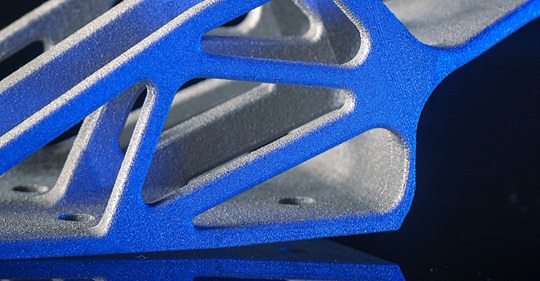Lloyd’s Register and TWI Ltd. have worked in partnership to update their guidance notes for the certification of products produced by additive manufacturing (AM) processes and the qualification of AM facilities.
LR and TWI first published AM guidance notes back in January 2016 to help manufacturers establish the safety of 3D printed parts. The guidance notes were updated in 2017 and this latest version reflects significant changes in technology over the last three years.
Specifically, the notes provide goal-based guidelines for the certification of parts produced using an Additive Manufacturing (AM) process, including powder bed fusion by laser or electron beam, directed energy deposition by laser and Wire + Arc AM (WAAM).
A rapidly developing and disruptive field of manufacturing, AM is being used by a growing number of businesses manufacturing parts for a wide range of industries, including construction, energy, marine and offshore, medical and aerospace.
LR Lead Specialist David Hardacre said: “Many businesses have used the previous guidance notes from LR and TWI to great effect. They’ve been designed for any business interested in starting their AM journey that needs to understand how qualification and certification requirements compare with conventional manufacturing processes – or for those who are already using AM and want to qualify their processes or certify their materials and/or parts. They’re also valuable for those organisations who sub-contract any element of their manufacturing to a supplier using AM, so they can understand what’s required for certification.”
AM certification ensures businesses can verify the safety of their products to protect key stakeholders such as operators, assets, the environment and the public. It provides product assurance, which means that legal requirements have been satisfied and the part is suitable for the intended application. It also demonstrates the quality and capability of the part to the customer and end-user.
Paul Goodwin, PPL and PBF Lead at TWI said, “AM processes are increasingly being used in industry, but the uptake has been hindered by a lack of understanding of how to control the quality and reproducibility of the parts made and how to qualify and certify these parts for use. These guidance notes are designed to help chart the way through what can at times appear to be a confusing set of requirements and to establish what the appropriate requirements for certification are.”
LR and TWI have been working together on joint industry projects for several years, often alongside third parties such as Rolls Royce Nuclear and the Singapore Centre for 3D Printing at Nanyang Technological University (NTU Singapore). LR has recently verified AM products and facilities for Shell, Keppel Marine & Offshore and Engie Laborelec.
